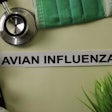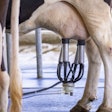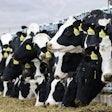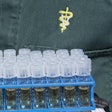
The U.S. Centers for Disease Control and Prevention (CDC) reported the first instance of human H5N1 described as “severe.”
According to the CDC, the case was confirmed on December 13 and the patient has been hospitalized in Louisiana.
Since April 2024, there have been a total of 61 reported human cases of H5 avian influenza reported in the United States, but until now, none have been considered severe.
Partial viral genome data of the H5N1 avian influenza virus that infected the patient in Louisiana indicates that the virus belongs to the D1.1 genotype related to other D1.1 viruses recently detected in wild birds and poultry in the United States and in recent human cases in British Columbia, Canada, and Washington state. This H5N1 bird flu genotype is different than the B3.13 genotype detected in dairy cows, sporadic human cases in multiple states, and some poultry outbreaks in the United States. Additional genomic sequencing and efforts to isolate virus from clinical specimens from the patient in Louisiana are underway at CDC.
While an investigation into the source of the infection in Louisiana is ongoing, it has been determined that the patient had exposure to sick and dead birds in backyard flocks. This is the first case of H5N1 bird flu in the U.S. that has been linked to exposure to a backyard flock.
While the location of the human case has not been identified, the United States Department of Agriculture (USDA) Animal and Plant Health Inspection Service (APHIS) issued a press release on December 16, stating that the presence of highly pathogenic avian influenza (HPAI) in a non-commercial backyard flock in Bossier Parish. APHIS also pointed out that this was the first case of HPAI in domestic birds in Louisiana during this outbreak, which began in February 2022.
CDC said a sporadic case of severe H5N1 illness in a person is not unexpected; avian influenza A(H5N1) virus infection has previously been associated with severe human illness in other countries during 2024 and prior years, including illness resulting in death.
No person-to-person spread of H5 bird flu has been detected, CDC said, adding that this human case underscores that, in addition to affected commercial poultry and dairy operations, wild birds and backyard flocks also can be a source of exposure.
People with work or recreational exposures to infected animals are at higher risk of infection and are encouraged to follow CDC's recommended precautions when around animals that are infected or potentially infected with H5N1 avian influenza virus. Backyard flock owners, hunters and other bird enthusiasts are particularly urged to take precautions.
















